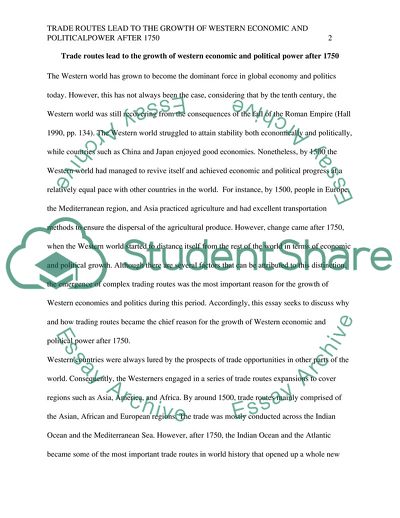Cite this document
(Trade Routes Lead to the Growth of Western Economic and Political Power After 1750 Essay Example | Topics and Well Written Essays - 1500 words, n.d.)
Trade Routes Lead to the Growth of Western Economic and Political Power After 1750 Essay Example | Topics and Well Written Essays - 1500 words. https://studentshare.org/history/1792096-what-was-the-most-important-reason-for-the-growth-of-western-economic-and-political-power-after-c1750
Trade Routes Lead to the Growth of Western Economic and Political Power After 1750 Essay Example | Topics and Well Written Essays - 1500 words. https://studentshare.org/history/1792096-what-was-the-most-important-reason-for-the-growth-of-western-economic-and-political-power-after-c1750
(Trade Routes Lead to the Growth of Western Economic and Political Power After 1750 Essay Example | Topics and Well Written Essays - 1500 Words)
Trade Routes Lead to the Growth of Western Economic and Political Power After 1750 Essay Example | Topics and Well Written Essays - 1500 Words. https://studentshare.org/history/1792096-what-was-the-most-important-reason-for-the-growth-of-western-economic-and-political-power-after-c1750.
Trade Routes Lead to the Growth of Western Economic and Political Power After 1750 Essay Example | Topics and Well Written Essays - 1500 Words. https://studentshare.org/history/1792096-what-was-the-most-important-reason-for-the-growth-of-western-economic-and-political-power-after-c1750.
“Trade Routes Lead to the Growth of Western Economic and Political Power After 1750 Essay Example | Topics and Well Written Essays - 1500 Words”. https://studentshare.org/history/1792096-what-was-the-most-important-reason-for-the-growth-of-western-economic-and-political-power-after-c1750.


